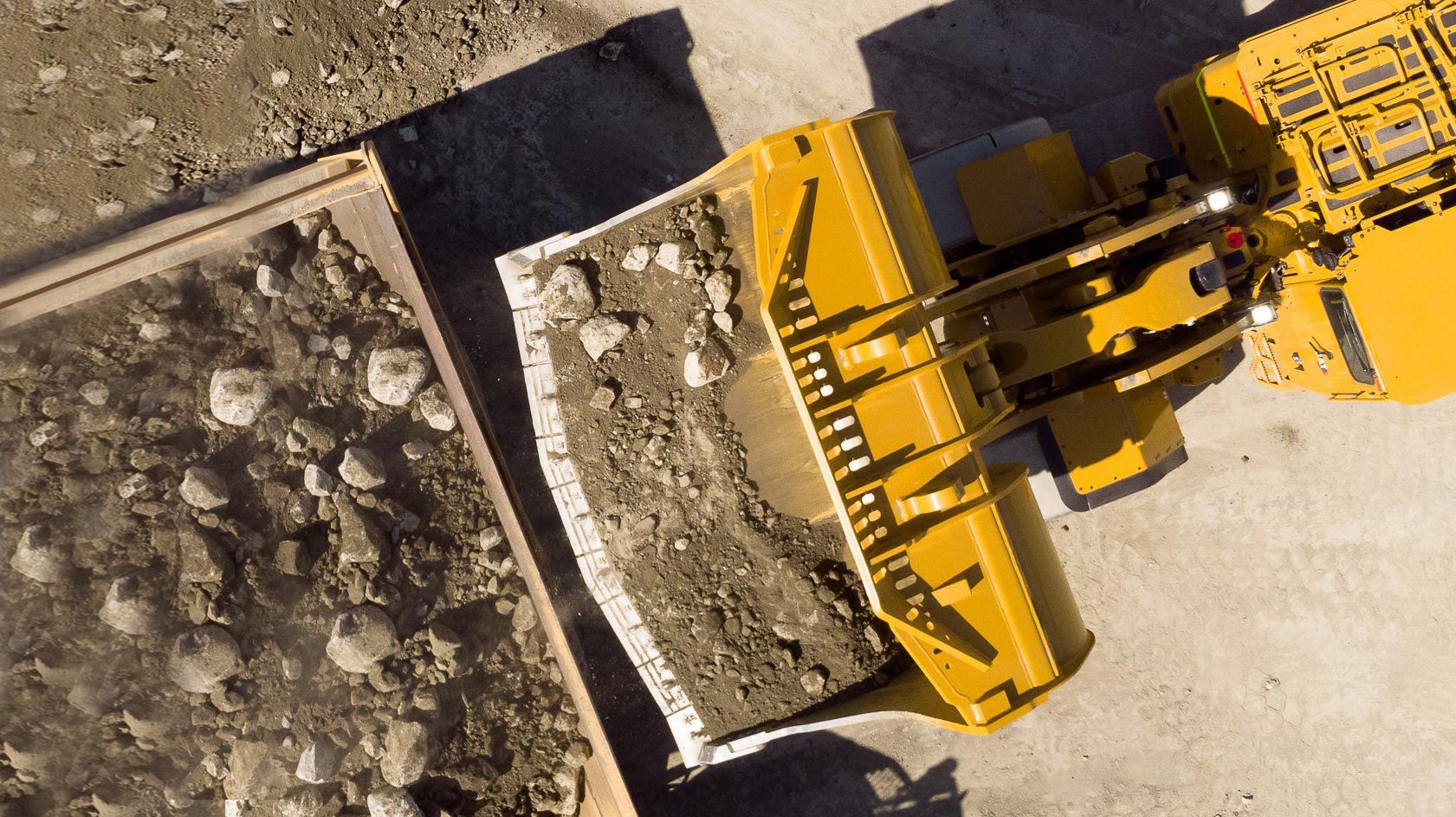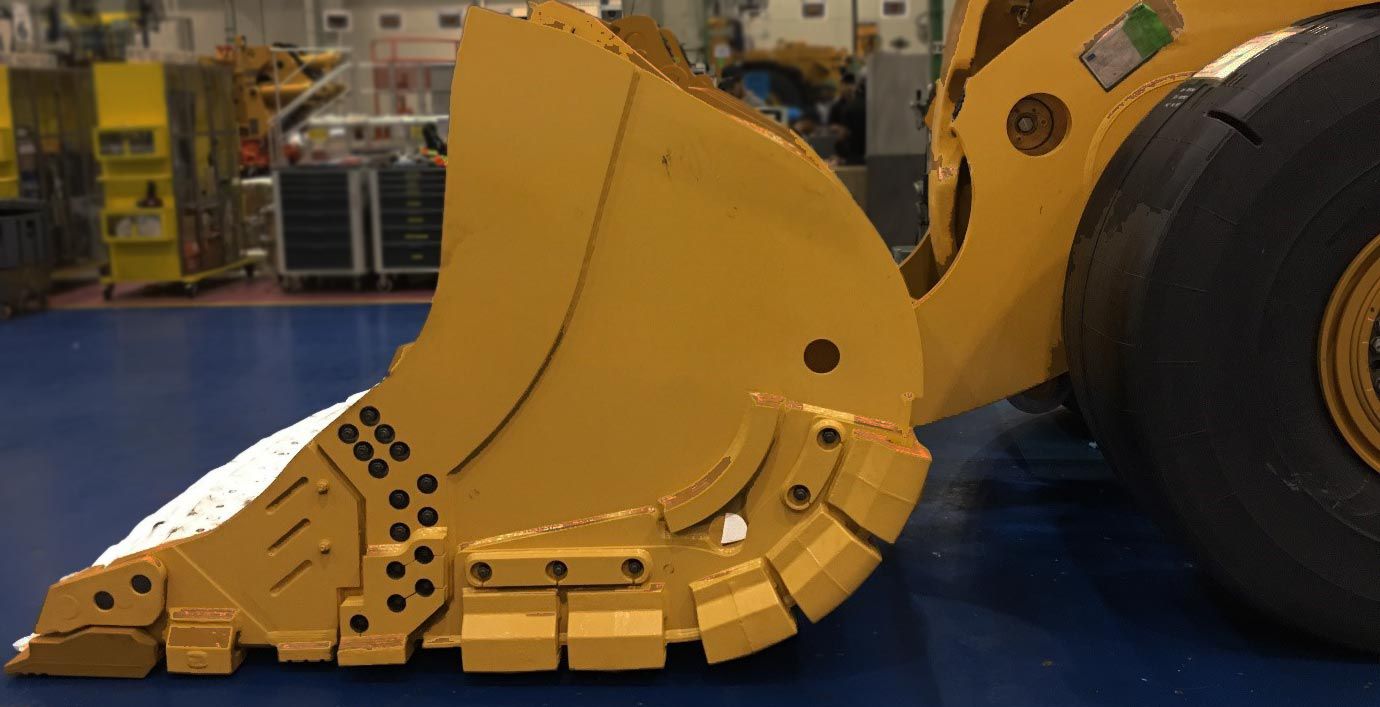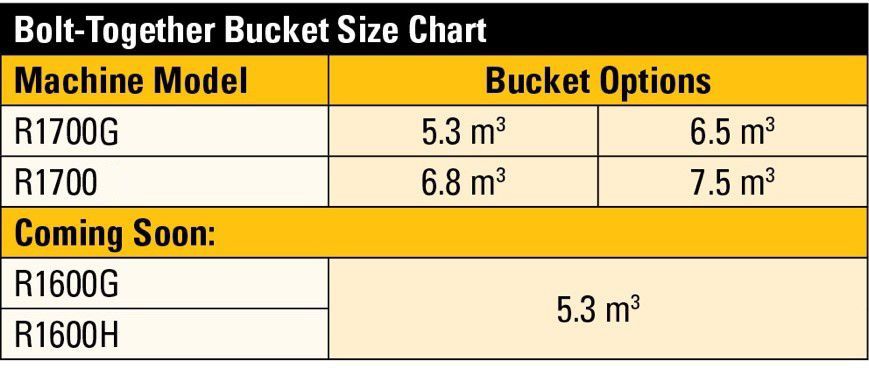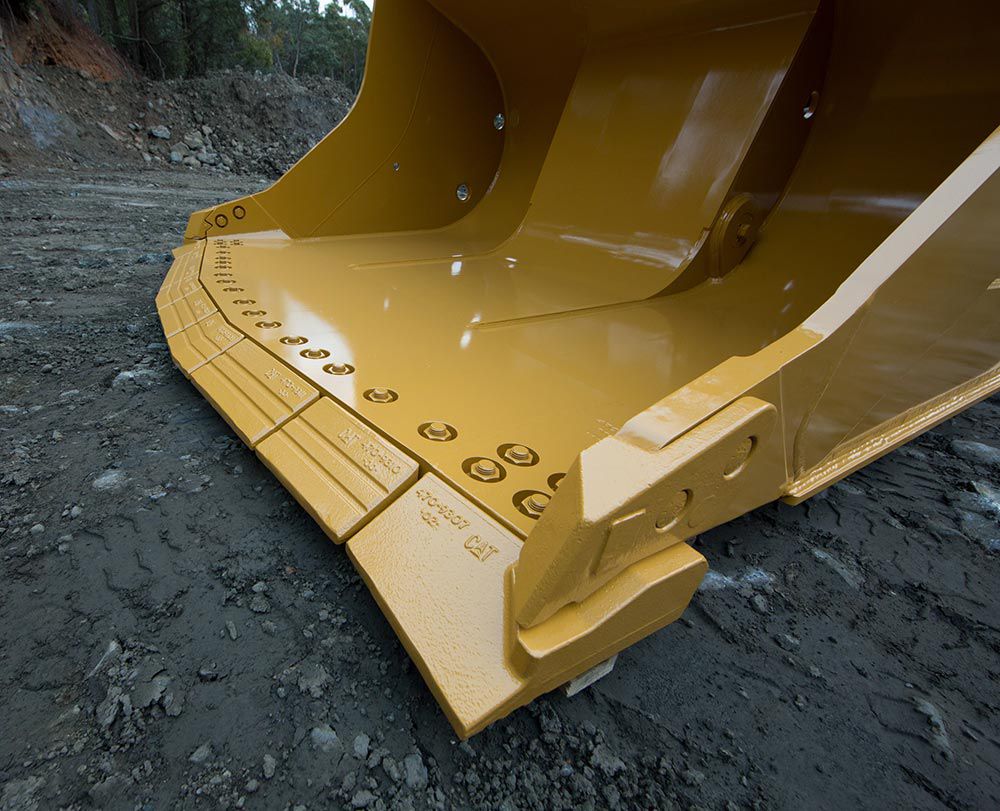

Sign In
Welcome! Sign In to personalize your Cat.com experience
If you already have an existing account with another Cat App, you can use the same account to sign in here
Register Now
One Account. All of Cat.
Your Caterpillar account is the single account you use to log in to select services and applications we offer. Shop for parts and machines online, manage your fleet, go mobile, and more.
Account Information
Site Settings
Security
Cat® Bolt-Together Buckets and Bolt-On GET
Replacing buckets and other ground engaging tools (GET) is a normal part of any loading operation. But for underground mines, limited access points and long travel distances from the entrance to maintenance areas mean that bringing in whole, ready-to-install buckets can be difficult or downright impossible.
Instead, many mines have buckets delivered in pieces, which are then welded together underground and attached. While this method solves the problem of getting the bucket where it’s needed, it comes with its own drawbacks. Welding takes time, demands skilled labor, and requires specialized equipment and consumables.
In harsh environments with high acidity, temperature or abrasiveness, replacing buckets and GET can have a significant impact on machine availability and operating costs. The more often a bucket needs to be replaced, the more time and money is spent welding instead of producing.
According to Ron de Haan, Caterpillar Underground Mining Product Support Manager, using bolt-together buckets and bolt-on GET instead of welding pieces together can significantly reduce downtime and costs for maintenance.
“Using bolts instead of welds can cut your replacement times by up to 75%,” said de Haan. “And you can replace them using simpler, less expensive tools.”
“Loaders are critical equipment. Every minute they spend in the shop is production — and profit — lost.”
Caterpillar offers two bolt-on solutions for underground mines looking to reduce bucket and GET replacement times and costs: bolt-together buckets and bolt-on, half arrow (BOHA) GET.

Bolt-Together Convenience
“One of the easiest ways to reduce the time and cost of bucket replacement is to replace hours of costly welding with a simple, bolt-together bucket,” said David Downie, Caterpillar Underground Mining Sales Support Consultant. “Our bolt-together buckets were designed specifically to reduce time and costs associated with cutting, transporting and welding buckets.”
According to Downie, there are a number of logistical factors that make bolt-together buckets a simpler, more effective solution. Most sites offer only one point of access, which may be far from the working areas or repair facilities. The repair facilities themselves are often limited in number, so occupying one for hours just to assemble a bucket can impact other maintenance tasks and reduce the availability of other machines.
Supply transport equipment availability can also be a problem. Cages, forklifts and man carriers all perform several important tasks around the site, and spending long periods of time transporting pieces of a bucket prevents them from carrying out other tasks.
“We currently offer bolt-together buckets for the R1700 and R1700G underground LHDs. We offer two sizes of bucket for each machine, so you can choose the bucket that fits your material and rated payload,” said Downie.
“The buckets have different connection points, so they aren’t interchangeable between the two machines. Soon we will also offer a single bucket for the R1600G and R1600H.”

Cat® bolt-together buckets are designed for the harsh conditions of underground mining, reinforced and overdesigned for long life. They’re built in the same factory and go through the same strict quality control processes as any Cat machine.
With proper GET management, as well as corner and heel guarding, a Cat bolt-together bucket should last through the first overhaul period of the machine’s life — which means even less downtime for bucket replacement and more productivity.
According to Tom Howell, Product and Application Manager for Mining at Cat dealer Toromont Cat, using a bolt-together bucket instead of a traditional welded bucket can increase machine availability and simplify maintenance procedures.
“Having a bucket that can be assembled underground without needing to cut or weld is a big advantage,” said Howell. “And for mines that use weld-on products, a lip assembly can be easily removed and serviced on the surface and then shipped underground. These strategies both help improve air quality by eliminating the need to weld underground.”
Heavy-Duty Bolt-On GET
The Cat line of BOHA GET presents another opportunity to replace welding with a faster, less expensive alternative.
“Not all parts of a bucket wear at the same rate,” expained Tom Congdon, Caterpillar Engineering Manager for Ground Engaging Tools. “Ground engaging tools are what your machines use to dig and break rock. They experience tremendous stress and wear much faster than the rest of the bucket, and have to be replaced much more often.”
According to Congdon, the entire line of Cat BOHA GET was designed for highly abrasive applications where standard weld-on GET experience high wear rates, contributing to long maintenance times and higher costs. BOHA GET also have more wear material than standard weld-on edges. In testing, these tools have shown an average of more than 40% increased wear life compared to weld-on GET.
“We’ve tested these tools on seven customer sites and seen great results,” said Congdon. “Customers are able to change tools faster, and many of them are reporting improved life as well.”
The newest addition to the BOHA line is the BOHA65 for use on large underground loaders. BOHA65 offers up to 35% increase in wear material over the BOHA50, allowing it to deliver extended, productive life.
Instead of the entire tool being welded to the bucket each time it needs replaced, BOHA GET are attached using just a few bolts. The base edge is still welded to the bucket initially, but once it has been attached, new tips can be quickly and easily changed out using two to three bolts per tip. A typical weld-on set of cutting edges takes around 20 hours of highly skilled labor to replace. Cat BOHA GET can be replaced in one or two hours with relatively simple tools and labor.
According to Congdon, BOHA GET can also enhance productivity in other ways. Despite the additional wear material, their low-profile front edges make pile penetration easier for faster bucket loading. The segments are designed to minimize carrying weight while keeping the bucket protected.
Built-in wear indicators make it easy to inspect wear and plan maintenance, while corner guards help extend the service life of cast corners. Life can be further extended using other Cat protection systems like heel shrouds, mechanically attached wear plate systems and wear bars.

FEEDBACK FROM THE FIELD
Several Caterpillar customers who tried this new solution reported positive results in a variety of applications, from reduced downtime and costs to increased life.
Dan Manhire, a master mechanic at a gold mine in Nevada, USA, said the BOHA teeth dramatically reduced changeout times. “Changeout was about an hour and a half, but I believe we could easily change out a full set in an hour,” he said. “I am very happy with what we got out of this set.”
A maintenance manager at a gold mine in Montana, USA, noticed improvements in both changeout time and overall life. “I was very surprised and pleased with the results,” said Jim Carr. “The Cat BOHA GET system actually outperformed our current weld-on system.”
“Our ground conditions here are some of the most challenging and abrasive any of us has had to deal with,” Carr continued. “So it’s nice having a product that’s easy to maintain and can quickly be put back into production.
At a gold-copper operation in British Columbia, Canada, BOHA GET resulted in a significant reduction in changeout times and costs.
“The time to replace the edges is 75% less than the downtime of replacing a bucket,” said Mechanical Superintendent Tyler Thompson. “We track our bucket program very closely by hours and cost, and our cost per hour is 39% less with the new Cat system — and that’s not including the increase in machine availability.”
Brian McLean, Mobile Maintenance Superintendent at a nickel mine in Ontario, Canada, said that BOHA GET had a positive impact on his mine. “We saw a 10 percent reduction in cost, and it was replaced at 2.500 hours,” he said. “Our previous tool was replaced at 1,500.”
“The segments performed just as well as any other bucket or lip we’ve used in the past, including wear and mucking performance. And there was less downtime for replacement, which can be done without any outside resources,” said McLean.
To learn more about how Cat bolt-together buckets and BOHA GET can help improve your operation, visit cat.com/underground



